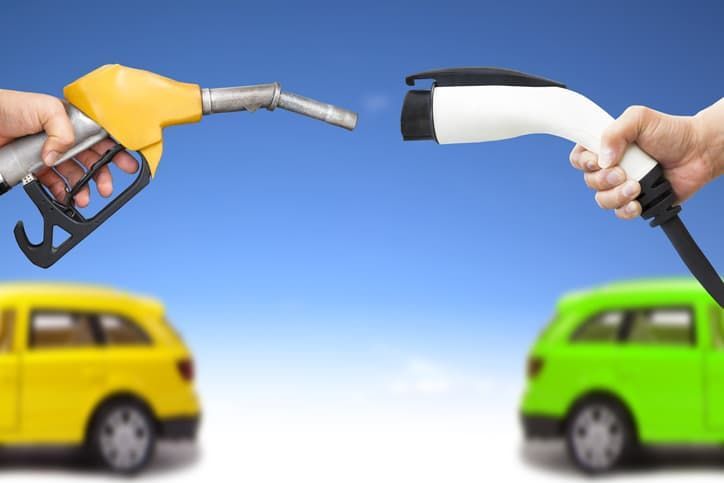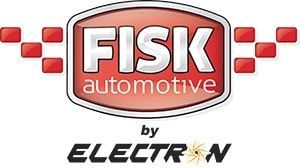What’s the Difference Between a Hybrid, a Plug-in Hybrid, and an Electric Car?

If you’ve been thinking about purchasing an alternative-fuel vehicle, you may have discovered there are now more choices available than ever before. Hybrids, plug-in hybrids, and electric cars have become increasingly popular; despite the slowdown from many automakers during the pandemic, there are dozens of all-new electric models that are set to hit the market by the end of 2024.
Regardless of the type of electric vehicle, it’s important to understand that they work quite differently than conventional gas-powered vehicles. To help you find the right car for your needs and driving preferences, here’s a closer look at each of these technologies and their pros and cons.
How Do Hybrid Vehicles Work?
Hybrids use at least one electric motor in conjunction with a gasoline-powered engine and a small battery pack. The electric motor helps supplement the gas engine, allowing it to shut off while coasting at low speeds. The battery is charged through regenerative braking and from the engine while it’s running; each time the driver brakes, some of the energy that would otherwise be lost is captured and stored by the battery for later use. One of the benefits of this is that drivers don’t need to monitor the battery charge or plug in their cars.
Hybrids offer similar range and power as a vehicle with an internal combustion engine (ICE), but they have better fuel economy and reduced emissions. There are many affordable models available, with prices starting below $24,000, and most people who have hybrids report overall higher satisfaction with them than drivers who have non-hybrid versions.
The Pros & Cons of Hybrids
Pros:
- Excellent fuel efficiency
- Lower emissions than conventional gas-powered vehicles
- No need to plug them in or monitor the battery’s charge
- Can fuel up at a regular gas station
- Often more powerful than ICE equivalents
Cons:
- Can have higher upfront costs (typically $1,000 to $3,000 more) than an ICE model
- Some models have longer stopping distances than their conventional counterparts
- Many models use continuously variable transmissions (CVTs) which can also cause the engine to rev higher than many drivers are used to
How Do Plug-in Hybrids Work?
Plug-in hybrid vehicles (PHEVs) work very similarly to standard hybrids; they have gas-powered engines that are supplemented by electric motors and batteries. One of the main differences is that on a PHEV, the battery is significantly bigger, which allows the vehicle to drive on electric power alone and for longer distances than a standard hybrid. Although the battery is still recharged through regenerative braking, PHEVs need to be plugged in (like a true electric vehicle) to give them a full charge. Their versatility makes them equally suitable for local driving and long road trips.
The Pros & Cons of Plug-in Hybrids
Pros:
- Good fuel economy, even after the electric range is depleted
- Offers the benefits of a true electric vehicle for short drives and the range of a gas vehicle for longer trips
- Some models are eligible for a federal tax incentive of up to $7,500
- Most models can travel between 20 and 40 miles on electric power
Cons:
- More expensive than a standard hybrid or gas-powered car
- Must be recharged frequently to keep the vehicle running as efficiently as possible
- Some models are less fuel-efficient than standard hybrids once the battery is depleted
- Charging can be challenging for those who live in a multi-unit dwelling or don’t have access to off-street parking
- The charging components can take up cargo space
How Do Fully Electric Vehicles Work?
Fully electric vehicles (also called EVs, Battery Electric Vehicles, or BEVs) use electric motors that are powered by large battery packs. As opposed to hybrids and plug-in hybrids, they don’t use gasoline or diesel fuel, nor do they have an internal combustion engine or a conventional transmission. They’re classified by the EPA as “zero-emissions vehicles”. BEVs can be charged in a normal household outlet (called a Level 1 outlet) or at higher voltage outlets. Normally, it takes around 8 to 10 hours to recharge an EV using a level 2 outlet (240-volt) when the battery is almost completely drained.
Modern BEVs can travel over 200 miles on a single charge, although some luxury brands can drive over 300 miles per charge. They’re very efficient, but since they require a charge, drivers need to plan out when and where they can charge their car when traveling long distances.
The Pros & Cons of EVs
Pros:
- It’s typically less expensive to charge an EV than it is to buy gas
- Can be conveniently recharged at home
- Maintenance costs are typically lower since they don’t have complex components
- No tailpipe emissions
- Many EVs can accelerate faster than gas-powered vehicles due to the instant power provided by the electric motor(s)
- Quiet and comfortable to operate
Cons:
- More expensive to buy (often around the price of an entry-level luxury vehicle)
- Need to plan when and where to charge your vehicle when taking long road trips
- Charging can be challenging for those who live in a multi-unit dwelling or don’t have access to off-street parking
- Charging can take a long time—sometimes up to hours, depending on the type of outlet you’re using
- Extreme temperatures and using climate control reduces the driving range
Repairs and Maintenance for Hybrids, Plug-in Hybrids, and Electric Vehicles
Hopefully, this has given you a better idea of how each of these vehicles work and what you should consider when making a purchase. As you can see, all three have their pros and cons, so you’ll have to weigh factors like upfront costs, the distance you regularly travel, and the convenience of charging your vehicle.
Since both types of hybrids have internal combustion engines, maintenance requirements are similar to a conventional gas-powered vehicle, although the brakes generally last longer due to the regenerative braking system. To keep your car running its best, you’ll still need to have some scheduled maintenance performed, such as oil changes, belt replacements, and tire replacement and servicing. In addition, the electrical system (battery, motor, and associated electronics) will also need maintenance.
In comparison, EVs typically require less maintenance. There are fewer fluids that need to be replaced and there are fewer moving parts compared to a conventional gas engine. Brake wear is generally minimal because of regenerative braking, and the battery, motor, and associated electronics typically require little to no regular maintenance. Battery replacement can be costly, but the good news is that most manufacturers warranty their batteries for up to at least 8 years or 100,000 miles and the cost of replacing the battery is far outweighed by the savings in gas.
If you’ve decided to take the plunge and purchase a hybrid or electric vehicle, Fisk Automotive has you covered! We’re the only AAA-Approved and ASE Blue Seal Certified automotive repair facility in the area offering comprehensive care for your vehicle. With our state-of-the-art facility and a team of experienced technicians, you can be confident you’ve received the most knowledgeable auto care. Call us today at (714) 526-3303 or request an appointment online.

